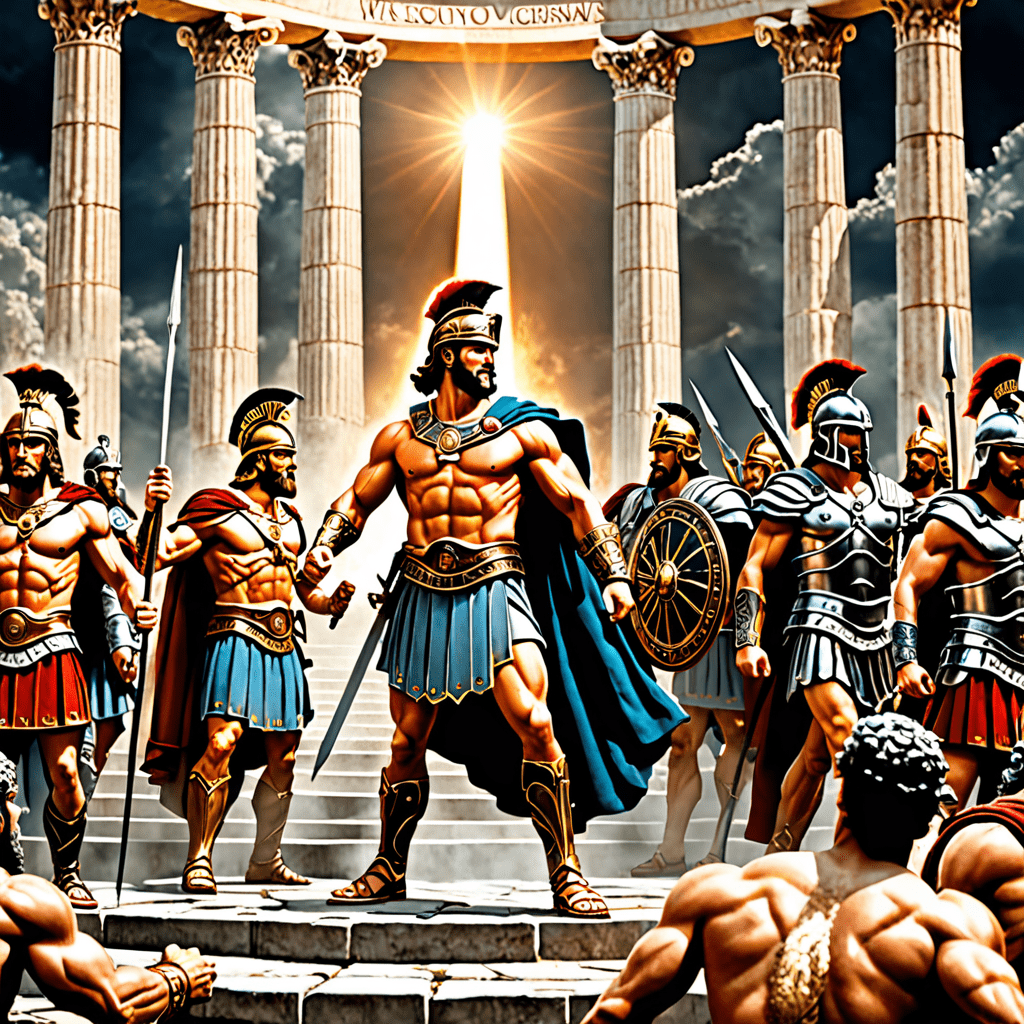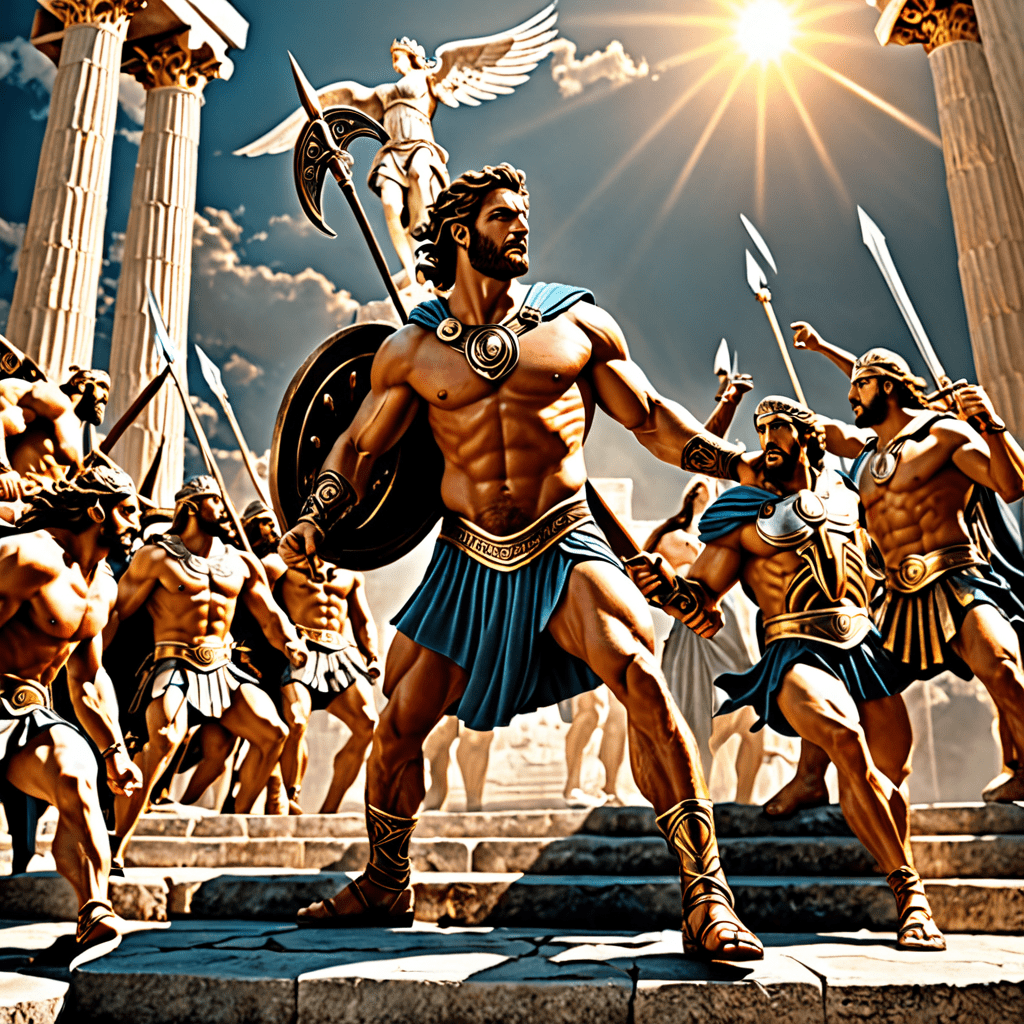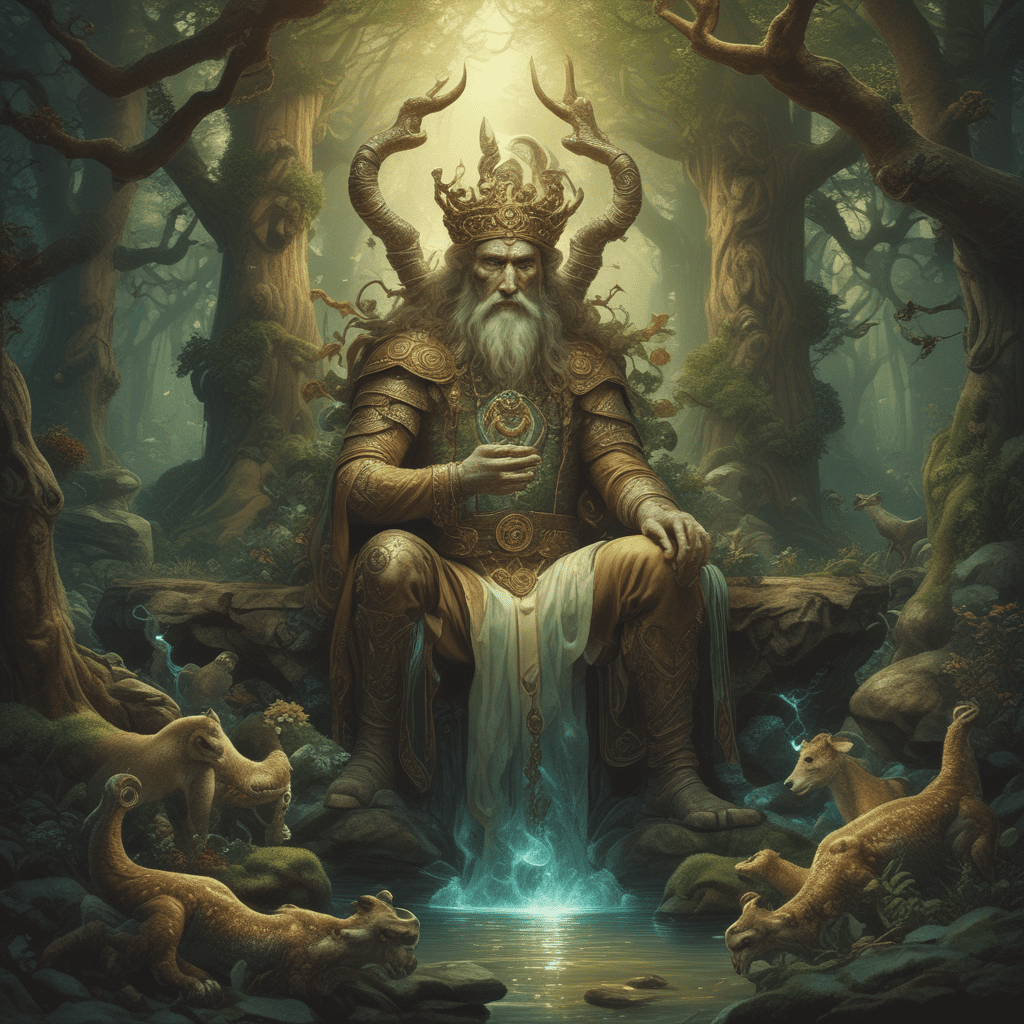War of the Gods: The Most Epic Battles of Ancient Lore
1. Introduction to Divine Warfare
Divine warfare refers to the conflicts between gods and god-like beings as depicted in ancient mythologies. These epic battles often symbolize the struggle between order and chaos, good and evil, or the natural and supernatural. Throughout various cultures, these godly conflicts have played a pivotal role in shaping their narratives, moral lessons, and cultural values.
The significance of these godly conflicts extends beyond mere entertainment; they provide insights into the sociopolitical landscapes of the time, the values and fears of the people, and the explanation of natural phenomena. This article aims to explore some of the most epic battles in ancient lore, examining their characters, narratives, and lasting impacts on civilization.
2. The Pantheon of Gods: Key Players in Mythological Conflicts
In every mythology, a pantheon of gods exists, each with distinct personalities, powers, and relationships. Some of the major deities include:
- Greek Mythology: Zeus, Hera, Poseidon, and Hades
- Norse Mythology: Odin, Thor, Loki, and Freyja
- Hindu Mythology: Vishnu, Shiva, and Durga
- Egyptian Mythology: Ra, Isis, Osiris, and Set
These gods are often characterized by their warrior traits, such as bravery, cunning, and strength. Relationships between these deities are marked by rivalries, alliances, and betrayals, all of which serve as catalysts for the epic battles that define their myths. Understanding these dynamics is crucial for comprehending the narratives that unfold in divine warfare.
3. The Titanomachy: Clash of Titans and Olympians
The Titanomachy is one of the most significant events in Greek mythology, representing the battle between the Titans, led by Cronus, and the Olympian gods, led by Zeus. This ten-year conflict was not just a physical battle but a struggle for supremacy over the cosmos.
Key figures involved in this epic clash include:
- Zeus: The leader of the Olympians and the god of sky and thunder.
- Cronus: The King of the Titans and father of Zeus.
- Rhea: The mother of the Olympians, who aided Zeus in his quest.
The consequences of the Titanomachy were profound. The defeat of the Titans led to the establishment of a new order in the universe, with Zeus and his siblings taking control of the heavens and the earth. This battle set the stage for human civilization, as the Olympians became the rulers of both gods and men.
4. Ragnarok: The Norse Apocalypse
Ragnarok, often referred to as the “Twilight of the Gods,” is the apocalyptic battle in Norse mythology that foretells the end of the world and the death of many gods. It is a complex narrative filled with significant events and characters.
Key figures involved in Ragnarok include:
- Odin: The All-Father and god of wisdom, who meets his doom at the jaws of Fenrir.
- Thor: The god of thunder, who faces the Midgard Serpent, Jörmungandr.
- Loki: The trickster god, whose betrayal leads to the chaos of Ragnarok.
- Fenrir: The monstrous wolf destined to kill Odin.
The philosophical implications of Ragnarok are profound; it represents not only the end of the old order but also the cyclical nature of life and death. From destruction arises renewal, as the world is reborn from the ashes of the old.
5. The Mahabharata: The Great War of Kurukshetra
The Mahabharata is one of the longest epics in the world, detailing the great war of Kurukshetra between two factions of a royal family: the Kauravas and the Pandavas. This epic conflict is rich with moral dilemmas, philosophical discourse, and divine interventions.
Major characters include:
- Arjuna: A master archer and one of the Pandavas, who struggles with his duty in battle.
- Krishna: Arjuna’s charioteer and divine guide, who imparts crucial lessons on duty and righteousness.
- The Kauravas: The antagonistic cousins of the Pandavas, led by Duryodhana.
The moral dilemmas faced by Arjuna, such as the conflict between duty (dharma) and familial loyalty, serve as a central theme throughout the Mahabharata. The lessons derived from this epic battle continue to resonate in contemporary discussions about ethics and morality.
6. The Battle of the Gods in Egyptian Mythology
In Egyptian mythology, the conflict between Set and Osiris represents the struggle between chaos and order. Set, the god of chaos and storms, kills his brother Osiris, the god of the afterlife and resurrection, leading to a series of divine confrontations.
The key figures in this mythological battle include:
- Osiris: The slain god who represents order and rebirth.
- Isis: The wife of Osiris, who plays a crucial role in his resurrection.
- Horus: The son of Osiris and Isis, who avenges his father by challenging Set.
The symbolism of chaos versus order is a recurring theme in Egyptian mythology, illustrating the eternal struggle between the forces of good and evil. The restoration of Osiris by Isis emphasizes themes of resurrection and continuity in the face of adversity.
7. The War of the Giants: Celtic Mythology’s Epic Struggles
Celtic mythology features the War of the Giants, notably the battles between the Tuatha Dé Danann and the Fomorians. These conflicts highlight the struggle for dominance over the land and its resources.
Key figures include:
- Lugh: A hero of the Tuatha Dé Danann known for his skills and leadership.
- Balor: A Fomorian giant with a destructive eye, representing chaos.
The legendary confrontations between these factions not only depict the valor of heroes but also reflect the cultural significance of land, fertility, and the natural world in Celtic heritage. These myths are integral to understanding the identity and values of ancient Celtic societies.
8. The Final Showdown: Divine Battles in Modern Interpretations
The influence of ancient battles has permeated modern literature, films, and video games, showcasing the timeless appeal of divine conflicts. Examples include:
- Clash of the Titans: A film that reimagines the battle between Perseus and various mythological creatures.
- God of War: A video game series that draws heavily from Greek and Norse mythology, featuring epic confrontations with gods.
- Percy Jackson and the Olympians: A series of books that bring Greek mythology into contemporary settings.
The ongoing fascination with divine conflict reflects a deep-rooted interest in the moral complexities and the epic nature of these ancient stories. Modern interpretations often recontextualize these battles, making them relevant for today’s audience while preserving their core themes.
9. Lessons from the Legends:
Throughout history, the epic battles of divine warfare have imparted valuable lessons that resonate with humanity. Themes of duty, sacrifice, the struggle between good and evil, and the cyclical nature of existence are prevalent in these narratives. They encourage reflection on moral dilemmas, the consequences of actions, and the importance of balance in the universe.
As we delve into these ancient myths, we uncover not only the stories of gods and heroes but also the timeless truths that continue to guide and inspire us in our own lives.



